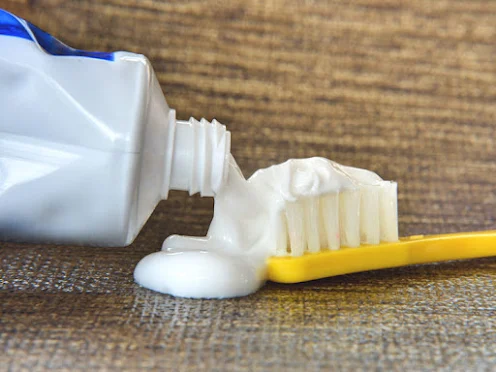2 Ways to Make Fluoride-Free Organic Toothpaste at Home
Why should you use natural toothpaste?
Fluoride: The most controversial toothpaste ingredient. I personally have to avoid it like the plague because of my thyroid disease. Additionally, fluoride interferes with my thyroid hormone uptake. Our family doesn’t use fluoride toothpaste and we filter it out of our water, but there is definitely research on both sides. Whatever your opinion, fluoride does come with a warning to call the poison control center immediately if ingested and after seeing a close friend’s scare when her son ingested some fluoride, it isn’t something I keep in our house.
Triclosan: A chemical used in antibacterial soaps and products. Triclosan was found to affect proper heart function in a study at the University of California Davis and the FDA ruled in 2017 that triclosan isn’t generally recognized as safe.
Glycerin: Another controversial ingredient, glycerin is found in many kinds of toothpaste, especially natural toothpaste. Glycerin is a sweet, colorless liquid and some research says it can coat teeth and prevent them from benefitting from the minerals in saliva. I know that when I used glycerin toothpaste in college, my teeth started to yellow, but the research is still mixed on whether glycerin is harmful or not. Especially when I was working to remineralize cavities, I concluded after research that it was better to just avoid them.
Surfactants: Many kinds of toothpaste contain surfactants like sodium lauryl sulfate, which gives toothpaste its foam and lather. Some research shows that SLS can cause mouth ulcers and canker sores.
Artificial colors/dyes or synthetic flavors: There are a few good natural kinds of toothpaste out there, but after looking at the ingredients, I realized I could make a similar concoction at home… and the toothpaste experiment was born.
2 Ways to Make Fluoride-Free Organic Toothpaste at Home
- 1 teaspoon baking soda
- ½ teaspoon -- nicely ground sea salt
- 1 drop peppermint or citrus pure essential oil
- A few drops of water
Mix all the ingredients in a dish until you create a solid paste. Put it on your toothbrush and brush your teeth.
2. Vegan Toothpaste
In order to keep the product’s texture, a lot of toothpaste consist of glycerin, but that always comes from animal origin except if it’s listed as vegetable glycerin.
Try the following thing and you’ll get vegan toothpaste that contains glycerin:
Ingredients:
- 2 teaspoons vegetable glycerin
- 4 tablespoons baking soda
- ½ teaspoons guar gum
- 8 tablespoons water
- 5 drops peppermint, clove, or citrus pure essential oil
Preparation:
Put all of the ingredients in a pot, besides essential oil. Cook on little heat for 5 minutes or at least by the time it gets a paste-like texture, and stir at regular intervals. After it gets cold, put essential oil and store it in an antiseptic jug at room temperature.
Dip your brush in it and use it to brush your teeth and see the magic.











